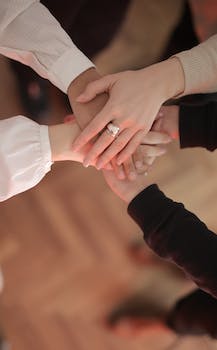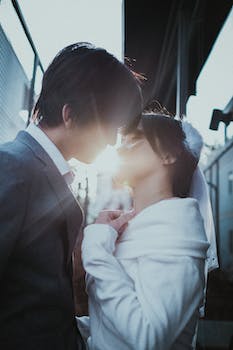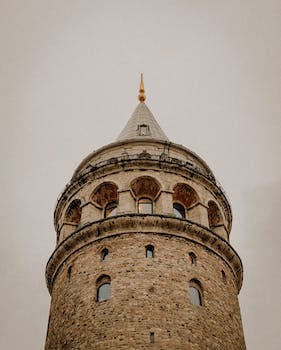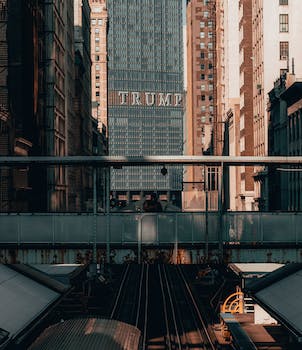

-
Table of Contents
Unveiling the Rich Tradition of Korean Comics: The Art of Manhwa
Introduction
Unveiling the Rich Tradition of Korean Comics: The Art of Manhwa
Korean comics, known as manhwa, have a rich and vibrant tradition that spans centuries. From its humble beginnings as simple illustrations in the early 20th century to the globally recognized art form it is today, manhwa has captivated audiences with its unique storytelling and distinctive artistic style. This art form has not only entertained readers but also provided a platform for social commentary and cultural expression. In this article, we will delve into the fascinating world of manhwa, exploring its history, evolution, and the impact it has had on Korean culture and beyond.
The Evolution of Manhwa: Tracing the Origins and Development of Korean Comics
Unveiling the Rich Tradition of Korean Comics: The Art of Manhwa
The Evolution of Manhwa: Tracing the Origins and Development of Korean Comics
Comics have long been a beloved form of entertainment and storytelling across cultures. In Korea, the art of comics, known as manhwa, has a rich and vibrant tradition that dates back centuries. Understanding the evolution of manhwa is essential to appreciating its significance in Korean culture today.
The origins of manhwa can be traced back to the early 20th century when Korea was under Japanese colonial rule. During this time, Japanese manga had a significant influence on Korean artists, who began to experiment with their own unique style of storytelling. However, it wasn't until the 1940s that manhwa truly began to take shape as a distinct art form.
In the post-war era, manhwa experienced a surge in popularity as the Korean people sought to rebuild their cultural identity. Artists like Kim Yong-hwan and Kim Seong-hwan emerged as pioneers, introducing new themes and styles to the world of manhwa. These early works often depicted the struggles and aspirations of the Korean people, reflecting the social and political climate of the time.
Throughout the 1950s and 1960s, manhwa continued to evolve, with artists experimenting with different genres and techniques. The introduction of color printing in the 1960s allowed for even more creative possibilities, leading to a boom in the industry. Manhwa became a staple of popular culture, with serialized stories captivating readers of all ages.
The 1970s marked a turning point for manhwa, as it began to gain recognition as a legitimate art form. The establishment of the Korea Manhwa Museum in 1974 further solidified its status, providing a platform for artists to showcase their work and for enthusiasts to learn about the history of manhwa. This period also saw the rise of influential artists like Lee Hyun-se, whose works pushed the boundaries of traditional storytelling.
In the 1980s and 1990s, manhwa continued to flourish, with a new generation of artists bringing fresh perspectives and innovative techniques to the medium. The introduction of digital technology revolutionized the industry, allowing for greater experimentation and accessibility. Manhwa began to gain international recognition, with translations reaching audiences around the world.
Today, manhwa remains a vital part of Korean culture, with a diverse range of genres and styles catering to a wide audience. From action-packed adventures to heartfelt dramas, manhwa offers something for everyone. The industry has also embraced webtoons, a digital format that has gained immense popularity both domestically and internationally.
The evolution of manhwa is a testament to the resilience and creativity of Korean artists. From its humble beginnings as a form of escapism during a tumultuous period in history, manhwa has grown into a thriving industry that continues to captivate audiences worldwide. Its ability to adapt and innovate ensures that the art of manhwa will continue to evolve and inspire for generations to come.
Exploring the Unique Visual Style of Manhwa: Aesthetic Elements and Techniques
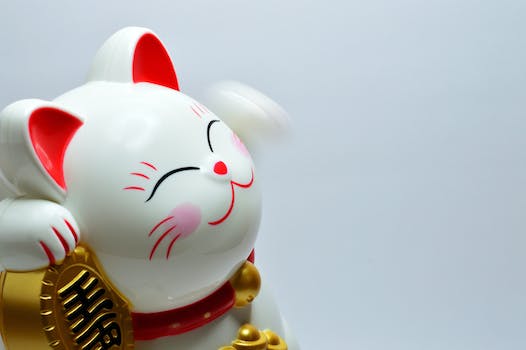
Unveiling the Rich Tradition of Korean Comics: The Art of Manhwa
Exploring the Unique Visual Style of Manhwa: Aesthetic Elements and Techniques
Korean comics, known as manhwa, have a rich tradition that dates back centuries. With their unique visual style, manhwa has captivated readers both in Korea and around the world. In this section, we will delve into the aesthetic elements and techniques that make manhwa a truly distinct art form.
One of the defining features of manhwa is its vibrant and expressive art style. Artists often employ bold and dynamic lines to convey emotions and actions. This creates a sense of movement and energy that draws readers into the story. Additionally, manhwa artists pay great attention to detail, meticulously crafting each panel to create a visually stunning narrative.
Another key aspect of manhwa's visual style is its use of color. Unlike its Japanese counterpart, manga, which is primarily black and white, manhwa embraces a wide range of colors. This allows artists to create vivid and lifelike illustrations that enhance the storytelling experience. From lush landscapes to intricate character designs, the use of color in manhwa adds depth and dimension to the artwork.
In addition to its vibrant art style, manhwa also employs various techniques to convey mood and atmosphere. One such technique is the use of panel layout. Manhwa artists carefully arrange panels to guide the reader's eye and create a sense of rhythm and pacing. By strategically placing panels of different sizes and shapes, artists can emphasize important moments or create a sense of tension and suspense.
Furthermore, manhwa often incorporates visual storytelling techniques to enhance the narrative. Artists use visual cues, such as facial expressions, body language, and background details, to convey emotions and convey information. This allows readers to immerse themselves in the story and connect with the characters on a deeper level.
Manhwa also showcases a wide range of artistic styles, each with its own unique characteristics. From realistic and detailed illustrations to stylized and exaggerated designs, manhwa artists have the freedom to experiment and push the boundaries of visual storytelling. This diversity of styles adds to the richness and depth of the manhwa tradition.
Moreover, manhwa artists often draw inspiration from traditional Korean art forms, such as ink painting and calligraphy. This fusion of traditional and contemporary elements creates a visually striking aesthetic that is distinctly Korean. By incorporating these traditional techniques, manhwa artists pay homage to their cultural heritage while also pushing the boundaries of artistic expression.
In conclusion, the visual style of manhwa is a testament to the rich tradition and artistic prowess of Korean comics. With its vibrant colors, dynamic lines, and meticulous attention to detail, manhwa captivates readers with its visually stunning illustrations. Through the use of panel layout, visual storytelling techniques, and a diverse range of artistic styles, manhwa artists create a truly immersive and engaging reading experience. By drawing inspiration from traditional Korean art forms, manhwa artists not only showcase their artistic talent but also celebrate their cultural heritage. As manhwa continues to gain recognition and popularity worldwide, it is clear that this unique art form has a bright future ahead.
Manhwa Beyond Borders: Impact and Influence of Korean Comics on the Global Stage
Unveiling the Rich Tradition of Korean Comics: The Art of Manhwa
Manhwa, the Korean term for comics, has a rich tradition that stretches back centuries. While often overshadowed by its Japanese counterpart, manga, manhwa has been gaining recognition and popularity on the global stage in recent years. This article will explore the impact and influence of Korean comics beyond borders, shedding light on the unique characteristics that set manhwa apart.
One of the key factors contributing to the rise of manhwa's global influence is its distinct visual style. Unlike manga, which typically features large, expressive eyes and exaggerated facial features, manhwa embraces a more realistic approach. The characters in manhwa are often depicted with more natural proportions, allowing for a greater sense of realism and emotional depth. This visual style has resonated with readers around the world, who appreciate the attention to detail and the ability to connect with the characters on a deeper level.
Another aspect that sets manhwa apart is its diverse range of genres and storytelling techniques. While manga often focuses on specific genres such as fantasy or romance, manhwa encompasses a wide array of themes and narratives. From historical dramas to sci-fi adventures, manhwa offers something for every reader's taste. This versatility has allowed manhwa to attract a diverse audience, transcending cultural boundaries and appealing to readers from different backgrounds.
Furthermore, manhwa has been able to make its mark on the global stage through its unique storytelling techniques. Korean comics often employ a more episodic format, with each chapter or volume telling a self-contained story while contributing to a larger narrative arc. This approach allows for a more immersive reading experience, as readers are constantly engaged and eager to uncover the next twist or turn in the plot. Additionally, manhwa often incorporates elements of traditional Korean culture, such as folklore and mythology, adding a layer of depth and authenticity to the storytelling.
The impact of manhwa on the global stage can also be attributed to the rise of webtoons, digital comics that are published online. Webtoons have revolutionized the way comics are consumed, offering a convenient and accessible platform for readers worldwide. With their vertical scrolling format and vibrant visuals, webtoons have captured the attention of a younger generation of readers who are accustomed to consuming content digitally. This shift towards digital platforms has allowed manhwa to reach a wider audience and gain recognition on a global scale.
In recent years, manhwa has also made its mark in the world of animation and entertainment. Popular manhwa series such as "Tower of God" and "The God of High School" have been adapted into successful animated series, further increasing the visibility and popularity of Korean comics. These adaptations have not only introduced manhwa to new audiences but have also sparked interest in the original source material, leading to increased sales and recognition for manhwa creators.
In conclusion, the impact and influence of Korean comics, or manhwa, on the global stage cannot be underestimated. With its distinct visual style, diverse range of genres, unique storytelling techniques, and the rise of webtoons and animated adaptations, manhwa has captured the attention and hearts of readers worldwide. As manhwa continues to gain recognition and popularity, it is clear that the rich tradition of Korean comics is here to stay.
Q&A
1. What is manhwa?
Manhwa is a term used to refer to Korean comics or graphic novels.
2. What is the significance of manhwa in Korean culture?
Manhwa has a rich tradition in Korean culture and has played a significant role in shaping the country's comic book industry. It has been a popular form of entertainment and storytelling for decades.
3. What can be expected from the exhibition "Unveiling the Rich Tradition of Korean Comics: The Art of Manhwa"?
The exhibition aims to showcase the history, artistry, and cultural significance of manhwa. Visitors can expect to see a wide range of manhwa artworks, learn about its evolution, and gain insights into the unique storytelling techniques employed in Korean comics.
Conclusion
In conclusion, the art of Manhwa has a rich tradition in Korean comics. It has evolved over the years, blending traditional Korean aesthetics with modern storytelling techniques. Manhwa has gained international recognition and popularity, showcasing diverse genres and themes. With its unique artistic style and captivating narratives, Manhwa continues to captivate readers and contribute to the vibrant world of comics.


